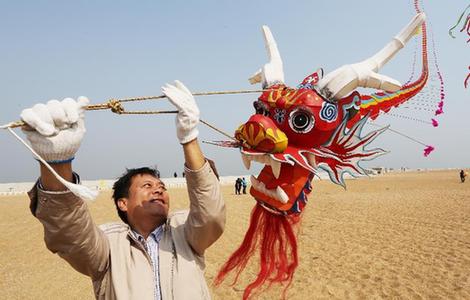Bridging cultures gaining momentum
Updated: 2015-04-13 05:24
By HUA SHENGDUN in Washington(China Daily USA)
|
||||||||
 |
|
Peter Bol (left), Carswell Professor of East Asian Languages and Civilizations and Vice Provost for Advances in Learning of Harvard University, chats with Ding Wei (middle), Vice Minister of China's Ministry of Culture, with William Adams, Chairman of US National Endowment for the Humanities (NEH), looking on, at the 4th US-China Cultural Forum in Washington on April 10. The forum is co-sponsored by China's Ministry of Culture and NEH, bringing leading scholars from both countries to discuss key subjects in humanities in cultural exchange. [Photo by CAI CHUNYING/CHINA DAILY] |
When a course on Chinese philosophy becomes one of the most popular choices among undergraduates at Harvard it's a pretty clear indication that China is catching on.
Classical Chinese Ethical and Political Theory, with an enrollment of more than 700, was second only to Introduction to Computer Science and surpassed perennial favorites like Positive Psychology: Harnessing the Power of Happiness.
Peter Bol, Carswell Professor of East Asian languages and civilizations at Harvard talked about the school's Chinese courses at the fourth US-China Cultural Forum on April 10 in Washington.
"As its economy grows and its role grows, China will be more important in Americans' consciousness," Bol said. "China has a history of diversity, openness and change. The more we can teach Chinese in America, the better."
With the theme of "cultivating collaborations: bridging cultures through humanities research and innovation", the one-day forum, co-hosted by the US National Endowment for Humanities and the Ministry of Culture of China, took place at the Constitution Center.
Scholars and officials from both China and the US explored three topics: scholarly translation, big data and digital humanities and online education.
Lou Wei, deputy director of the Palace Museum of China, said at the forum that the cooperation with the Virginia Museum of Fine Arts (VMFA) for the exhibition last year was a big success and "deepened mutual understanding between the two cultures".
The exhibition, titled Forbidden City: Imperial Treasures from the Palace Museum, Beijing, was a project five years in the making between the two museums. The art pieces displayed included paintings, sculptures, costumes, furniture, gold and silver, jade, lacquer, and other decorative arts, representing the imperial collection from China's Ming (1368-1644) and Qing (1644-1911) dynasties.
VMFA is also the first American museum to use 3-D printing technology to create a scale model of the Forbidden City for the exhibit, which drew more than 90,000 visitors, the equivalent of almost half the population of Richmond.
In May 2016, VMFA's renowned Faberge egg collection will go on display at the Palace Museum in Beijing, a first for the museum.
Asked about suspicions over China's trend towards Western values, Chinese vice-minister of culture Ding Wei said, "the understanding in both the universities and society (in China), including teaching materials about the outside world, is much more open".
"The Chinese education system teaches much more knowledge about Western society," Ding said. "We know the famous writers and the history of outside world much more than the other way round."
"I think it's a strong point about Chinese society. We need to keep this openness," he said. "I'm sure that future generations, including future generations of leadership, will become more open."
Liu Dong, vice-dean of the Academy of Ancient Chinese Studies at Tsinghua University in Beijing, said that culture convergence matters in bilateral relations.
"Both civilizations are absorbing advantages from each other through more and more dialogues and exchange programs. It is important for the two countries," Liu said.
Sheng Yang in Washington contributed to this story.

 National festival underway with cherry blossoms
National festival underway with cherry blossoms
 Hillary Clinton's China connections
Hillary Clinton's China connections
 Bicycle-friendly Hainan hotels cater to riders
Bicycle-friendly Hainan hotels cater to riders Stars dazzle at 2015 MTV Movie Awards
Stars dazzle at 2015 MTV Movie Awards
 Top 10 best airlines in the world
Top 10 best airlines in the world
 Can doctors' illegible handwriting be justified?
Can doctors' illegible handwriting be justified?
 Take home as many as you like
Take home as many as you like
 Weifang holds kite fair
Weifang holds kite fair
Most Viewed
Editor's Picks

|

|

|

|

|

|
Today's Top News
Hilary Clinton launches presidential campaign
'No room' for election China-bashing: US politicians
AVIC buys Calif. aviation parts distributor
Protests across Brazil seek ouster of president
US backs China's campaign to hunt down fugitives
Obama, Castro hold historic meeting, vow to turn the page
Living Buddha talks Tibet
Consulate general praises C-100 on 25th anniversary
US Weekly

|

|







